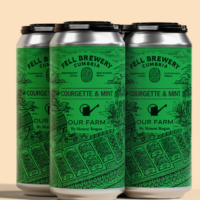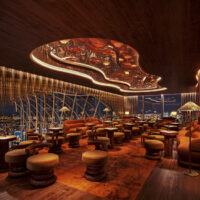
Taittinger’s new chef de cave, Alexandre Ponnavoy, who took over from Loïc Dupont in May, has the challenging task of maintaining the house’s signature lively style. One of the most delicate brut non-vintages on the market, thanks to its high Chardonnay content, 60% of the grapes that go into Taittinger Brut Réserve hail from grands and premiers crus sites. First released in the 1930s, today 30% of the blend is made up of reserve wine, and is aged on its lees for three years before release. It typically takes seven months to create.
“The process of making vintage and non-vintage is different because we don’t want to tell the same story in a brut non- vintage as we do in a vintage. A brut non-vintage is a consistent cuvée that acts as a house’s trademark. The biggest challenge is to understand the different wines destined for the blend to have a clear vision of the expression at the time of its launch,” says Ponnavoy.

Two houses that have built their reputations on their wines not undergoing malolactic fermentation (MLF) – Lanson and Gosset – have both tweaked their brut NV recipes in recent years. With the arrival of Lanson’s latest chef de cave, Hervé Dantan, in 2013, came the inclusion of MLF in a small portion of the blend for added softness, complexity and consistency.
“Our style needs to be adapted to new consumers, but I don’t want us to lose our soul – Lanson will always be known for mouth-watering freshness,” Dantan told the drinks business in 2016. “We age Black Label on its lees for a minimum of three years, and it has at least six months post-disgorgement ageing.
Behind the non-malo message there is a style that is very complicated to make.” More than half of the grapes that go into Black Label come from grands and premiers crus sites, and up to 40% of reserve wine is used in the blend each year. Dantan crafts Black Label from up to 300 elements each year – a mammoth feat that takes him six months.
In 2008, Gosset began using malolatic fermentation in a portion of its brut non- vintage blend to make its Brut Excellence more approachable. “We always had a fabulous brut NV, but the goal of this Champagne is to be poured by the glass as an apéritif, so we wanted to make it slightly softer by introducing more wines that undergo malo.
Our customers say that the Champagne is more open and accessible,” sales director Philippe Manfredini told db in 2014. Made from a blend of 45% Pinot Noir, 30% Chardonnay and 25% Pinot Meunier, Gosset Brut Excellence is known for its ‘vinous’ style, and boasts notes of apricot, peach, pear and almond. To achieve a consistent blend each year, cellar master Odilon La Varine blind tastes the vins clairs. “I have started to use more Chardonnay in the blend to enhance its freshness and elegance,” he says.
While brut non-vintage as a style is designed to be enjoyed immediately, having undergone sufficient cellar ageing, many chef de caves believe that the wines can benefit from further bottle age, and will develop added complexity, texture and richness over time. “Some brut NVs from the ’80s still taste beautiful; they definitely have great ageing potential,” says Gosset’s La Varine.
Though often overshadowed by the rarer and more niche Champagnes, brut non-vintage is the bedrock of the Champagne industry and offers consumers the purest expression of a house’s signature style. Cellar masters have the daunting task of maintaining the quality and consistency of their brut non-vintage blend, so that when anyone anywhere in the world opens a bottle, they will be greeted with a familiar taste that encapsulates the DNA of the house. Such alchemy deserves greater applause.




